
Erik Grönvall, Ph.D.
Associate Professor IT University of Copenhagen Rued Langgaards Vej 7 2300 Copenhagen S Denmark |
| HOME | PUBLICATIONS | PROJECTS | TEACHING | ORGANIZER |
|
|
Below follow some examples of research-projects I have been involved in.
CreepyLeaks
The project explores how people perceive privacy leaks from their mobile phones. Privacy leaks (Data sent to third-party servers, also called Ad-servers) from a mobile phone or table are detected via a monitoring-app (AntMonitor) developed by Athina Markopoulou and her team at University of California, Irvine (UCI). Through a specific hardware that connects to the mobile phone over Bluetooth, CreepyLeaks allow people to become aware of the leaks in real-time using on-body notifications (Electrical Muscle Stimulation). The project explore how people think and reflect about data leakage and the strategies they may apply to protect themselves from such leaks once they become aware of how their phones leak personal data. CreepyLeaks was developed by Erik Grönvall and its use and implications have been researched together with Irina Shklovski. Learn more about CreepyLeaks here. FeltRadio Imagine how it would be to bodily sense radio traffic all the time. FeltRadio is a portable and wireless technology that makes it possible to turn radio signals into visual (LED bar display) and tactile stimuli(Electrical Muscle Stimulation - EMS) as a form of sensorial augmentation. FeltRadio explores and makes us reflect upon what it would be like if we could sense, and feel, wireless traffic such as WiFi or Bluetooth. I am the inventor and designer of FeltRadio. Concept, hardware, software, and etc are all designed and developed by me. Together with Anna Vallgårda and Jonas Fritsch at ITU, FeltRadio has been studied and used in research.  Learn more about FeltRadio here. Give&Take Give&Take (www.givetake.eu) seeks to co-design an innovative ICT platform that will enable senior citizens to reciprocally exchange services, creating new opportunities for the elderly to contribute to society as volunteers and caregivers in their local communities. The Give&Take project is funded under the EU’s AAL programme. Partners - Universities: The IT University of Copenhagen (Denmark); The Royal Academy of Fine Arts, School of Design (Denmark); The Technical University of Vienna (Austria); SMEs: Take The Wind (Portugal); Socialsquare (Denmark); Municipality: Frederiksberg Municipality (Denmark). Intelligent BagRollator A national, Danish founded project that re-design and technology augment a modern walker for older adults. The project developed two concepts changing how people percive and use the walker. The project turn everyday walking activities into training and allow people with the walker to become SmartShoppers. A SmartShopper is part of a community of shoppers that look after each other and distribute shopping-related activities among the social network of shoppers. A SmartShopper (through the technology augmented walker) can for example scout for good offers in the neighbourhood stores and share those offers with other SmartShoppers. Tele-monitoring interventions: Tele-Skejby An investigation of how heart patients and pregnant women with severe pre-eclampsia (pregnancy poisoning) that are subject to home-based self-monitoring of their conditions perceived this intervention. Through interviews at home, following the patients at the hospital, workshops with both patients and care providers, and diverse design interventions the project uncovered non-technical aspects of self-monitoring at home. Challenges related to the insertion of monitoring technologies into everyday life, design flavs in current monitoring systems and how to support emergent behaviours such as learning and reflection. Add-On to the common medicine card A national, Danish founded project that explored possibilities with medication support systems (tablet-based) that were connected to a national, medication management infrastructure (named the common medication card/FMK). I was project manager regarding the design and development of the application MediFrame. This included UCD and PD activities with older adults, medication experts and a software firm. The MediFrame project was invited to, and presented, at an investment event at the British Embassy in Denmark. Vikærgården An ethnographic study of a Care Hotel, with the focus to understand how the staff communicate and collaborate, both internally at the Care Hotel and with external partners such as the hospital, home care workers and the police. The project also elicited design ideas, based on the ethnographic findings and a series of workshops, relted to how collaboration could be supported through diverse ICT designs. I was research responsible within the project that was a joint effort between Aarhus Municipality, Aarhus University and the software firm Logica. BDSI The BDSI consortium User Driven Healthcare Innovation (BrugerDriven SundhetsInnovation in Danish) focuses on improving the quality of life for senior citizens by developing IT support for independent living in the home. BDSI is an innovation consortium including partners from academia, industry, public healthcare organizations, and senior citizen associations. Within the project, "home" is recognized broadly, including social networks of the seniors, relatives, and local authorities and institutions. The idea is to focus on both individual needs in the homes and on possibilities involving the surrounding communities. A goal of the BDSI project is to develop an open infrastructure that can support and promote a healthcare practice in the home of the elderly. An application prototype in development that will utilize (and hence create requirements for) this infrastructure concerns elderly affected with vestibular dysfunction (chronic dizziness). Another application prototype in development aims to support the network of actors surrounding a senior with referred homecare. From February 2009 I overtook the responsibility as Project manager for the Computer Science Dept. involment in BDSI. Since Dec 2009 I'm also co-coordinator for the whole consortium (www.bdsi.dk). Download LinkLight flyer (pdf)! Example of work, Flyer: CareCoor. A system to support coordination and coolaboration in social homecare networks. Download CareCoor flyer! Example of work, the Interactive Flower. A prototype for home-based vestibular rehabilitation. 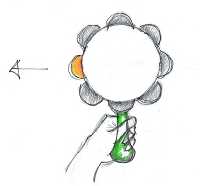
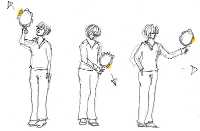
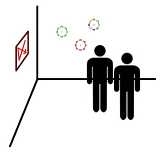
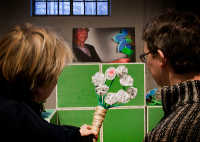
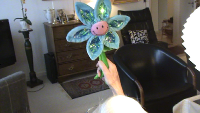
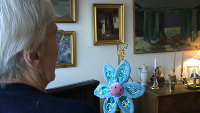
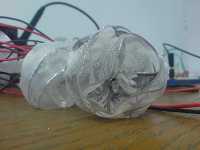
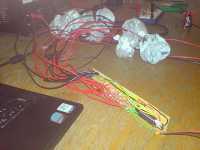
PALCOM The PalCom project was a European IST project. It commenced in January 2004 and ends in December 2007. The PalCom vision was to produce a software-architecture for palpable computing, i.e. an architecture that goes beyond 'traditional' ambient computing. Where ambient computing sees invisibility of computing sources and automation of human tasks as ideals, PalCom also insist on comprehensibility, user control and understanding. Among the partners are the University of Aarhus, EPFL Losanne, King's College London and companies like Siemens and Whitenstein. In Siena we worked with the 'Le Scotte' hospital to develop new technologies for premature born children and cognitive therapy tools for young children with special needs (http://www.ist-palcom.org/). COSI A European research project within Complexity in social science and ambient intelligence. COSI is a 3 year (2000-2003) research training Network under Framework 5 (DG XII TMR). The principle objective of the project is to assess critically and develop new ways of thinking about social processes, modelling and complex organisations. The approach is based on the notion of complexity modelling. The network is grounded on this new paradigm and has a specific goal: understanding and modelling socio-cognitive processes in the context of real organisational systems. The network is naturally pluri-disciplinary and pluri-institutional in order to increase awareness of the use of complexity theory in social science, promote the new culture of pluri-disciplinary research applied to concrete industrial problems and initiate an emergent European research movement in the domain of the simulation of social science (www.irit.fr/COSI/). |
ABOUT PROJECTS I have worked in a number of academic research projects. Some of them are listed here to the left. For a complete list, and additional info: Please request a CV by email. |